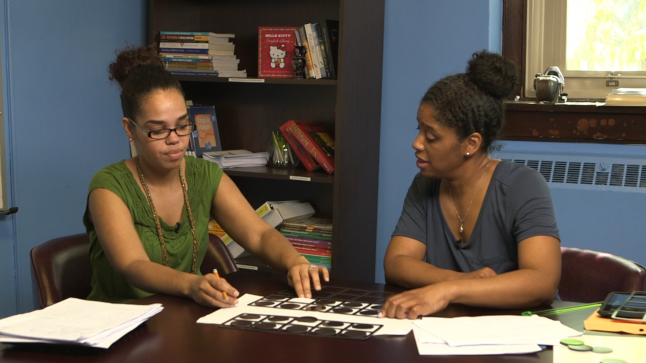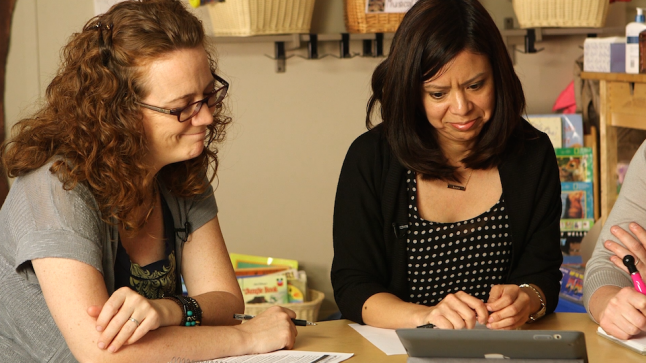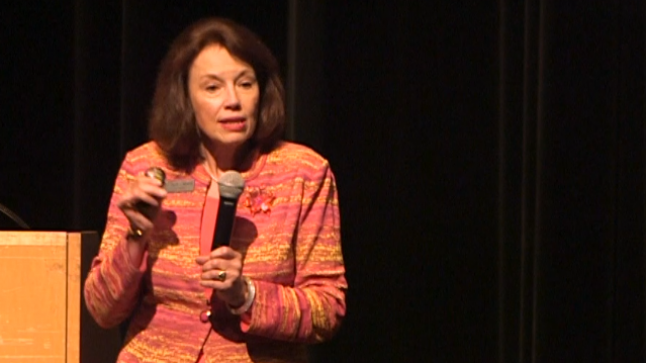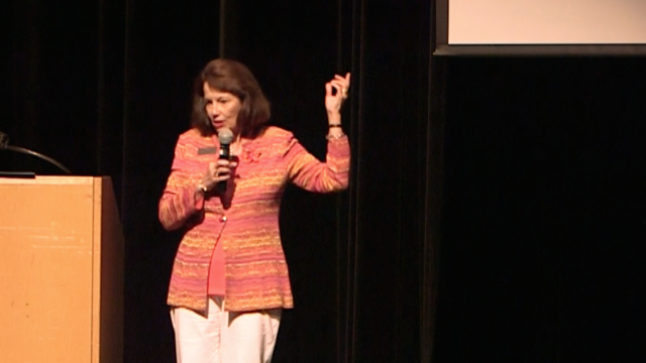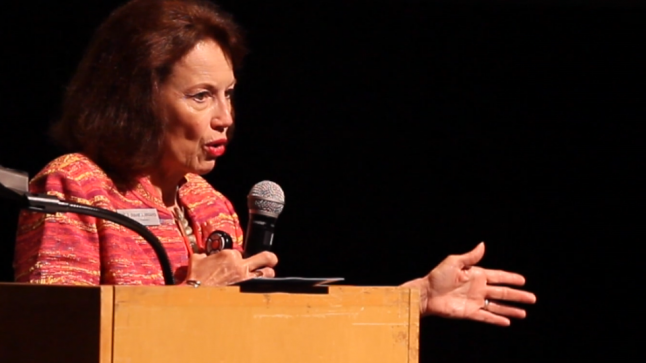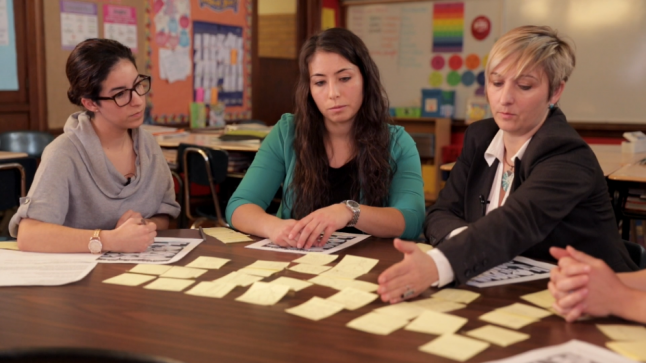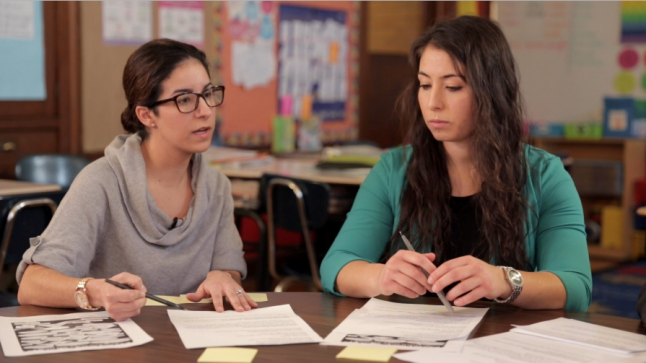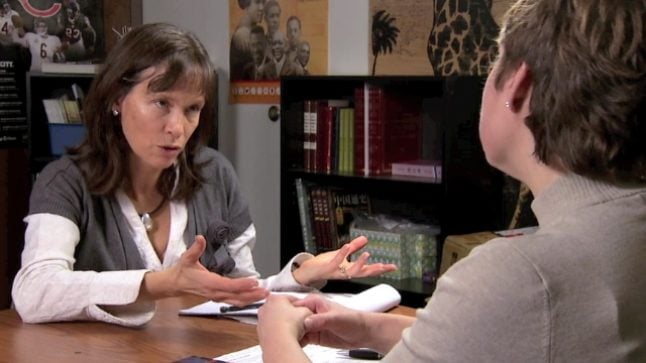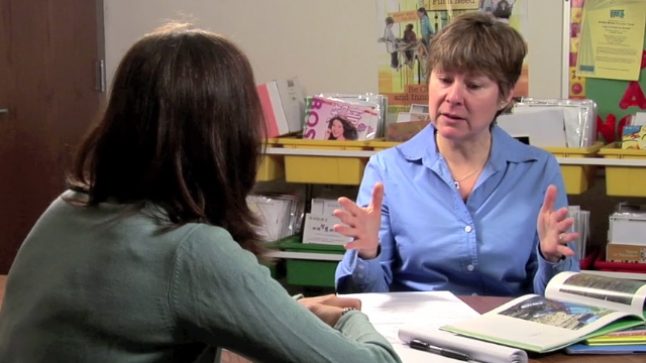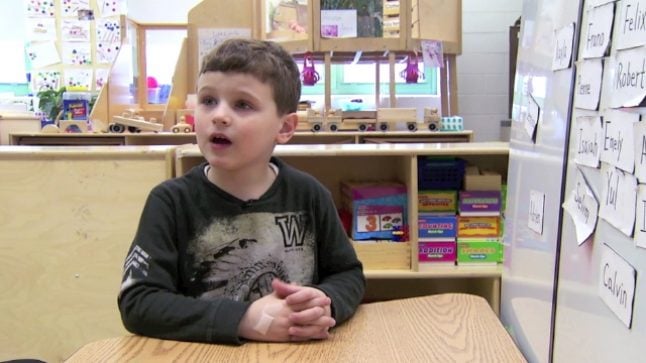Content Format: Video
Math-related resources and free stuff for teachers.
Series: Focus on Collaboration
Planning and Reflecting with a Ten Frame Number Talk
January 26, 2016
These two first-grade teachers plan a visual number talk together using ten frames. After both try it, they reflect on the strategies that students used.
- Topic: Number Operations
- Age/Grade Level: Pre-K, Kindergarten, 1st Grade, 2nd Grade, 3rd Grade
- Tags Number Talks
Series: Focus on Collaboration December 9, 2015
Analyzing Video in a Grade Level Meeting
In this video, a team of preschool teachers looks at video from a classroom to find and discuss evidence of student thinking.
- Topic: Sets
- Age/Grade Level: Pre-K
- Tags Grade level meeting
Series: Hear from the Experts November 19, 2015
Rich Math Tasks with Diane Briars
Diane Briars describes math tasks as "the vehicles for mathematical learning." It is important that tasks require reasoning and problem solving strategies.
- Age/Grade Level: Adult Learners, Pre-K, Kindergarten, 1st Grade, 2nd Grade, 3rd Grade
- Tags Problem Solving, Diane Briars
Series: Hear from the Experts November 18, 2015
Selecting Common Core Instructional Materials with Diane Briars
What is the quality of the instructional activities that students will be engaged with everyday? Diane Briars explores this question.
- Age/Grade Level: Adult Learners, Pre-K, Kindergarten, 1st Grade, 2nd Grade, 3rd Grade
- Tags Common Core, CCSS, Diane Briars
Series: Hear from the Experts November 16, 2015
Learning Goals in the Common Core with Diane Briars
Diane Briars differentiates between the learning goals of a particular lesson and the Common Core State Standards associated with it.
- Age/Grade Level: Adult Learners, Pre-K, Kindergarten, 1st Grade, 2nd Grade, 3rd Grade
- Tags Common Core, CCSS, Diane Briars, Planning
Series: Focus on Collaboration October 20, 2015
Anticipating and Sorting Student Responses in a Grade Level Meeting
After choosing a common task, the teachers in this grade level meeting anticipate student responses, then sort and sequence them by level of complexity.
Series: Focus on Collaboration October 19, 2015
Selecting a Common Task in a Grade Level Meeting
During the first part of this grade level meeting, teachers work together to select a problem to give to their students. Looking at several different options, they discuss the strengths of each problem, as well…
Series: Focus on Collaboration October 18, 2015
Reflecting Conversation for Shoe Graph Lesson
In this conversation, a teacher reflects on the successes and difficulties of a recent lesson. With a coach, she discusses the successes of the lesson, as well as details to improve on next time.
- Age/Grade Level: Pre-K, Kindergarten
- Tags English Language Learner, Graphing, Shoes, Seasonal, Books
Series: Focus on Collaboration October 17, 2015
Planning Conversation for Shoe Graph Lesson
In this planning conversation, a teacher and coach discuss some of their ideas and concerns about a forthcoming lesson. With a coach, she discusses some of her ideas and concerns about the forthcoming lesson.
- Topic: Data Analysis
- Age/Grade Level: Pre-K, Kindergarten
- Tags English Language Learner, Graphing, Shoes, Seasonal, Books, Planning
Series: Focus on the Child September 4, 2015
Daily Attendance Chart with Child 27
A student explains how his classroom's attendance chart is used.
- Topic: Data Analysis
- Age/Grade Level: Pre-K, Kindergarten
- Tags Child 27, Attendance
